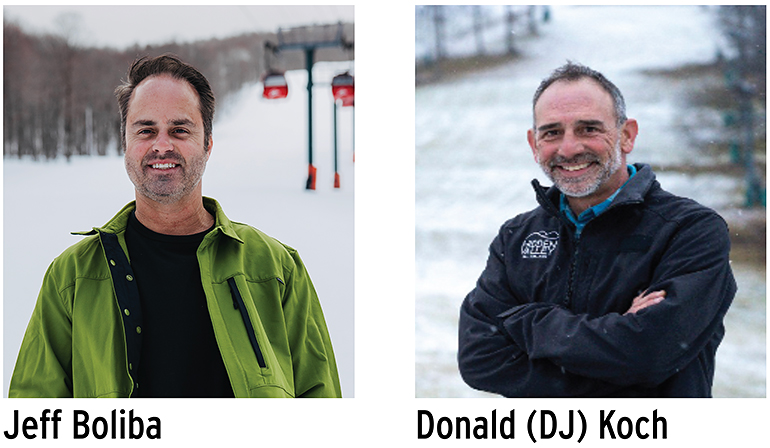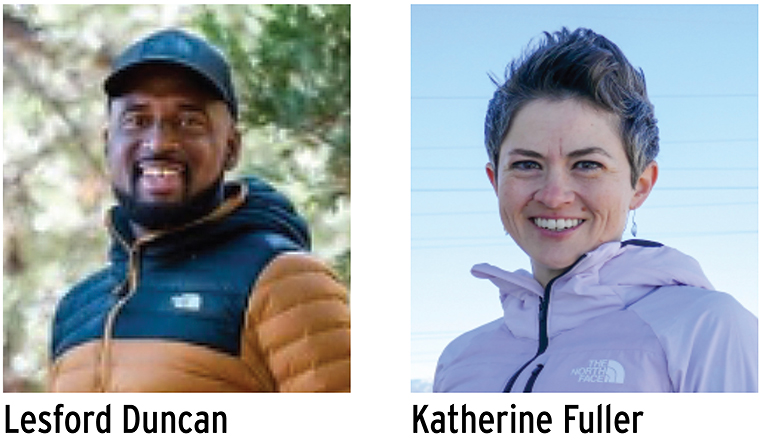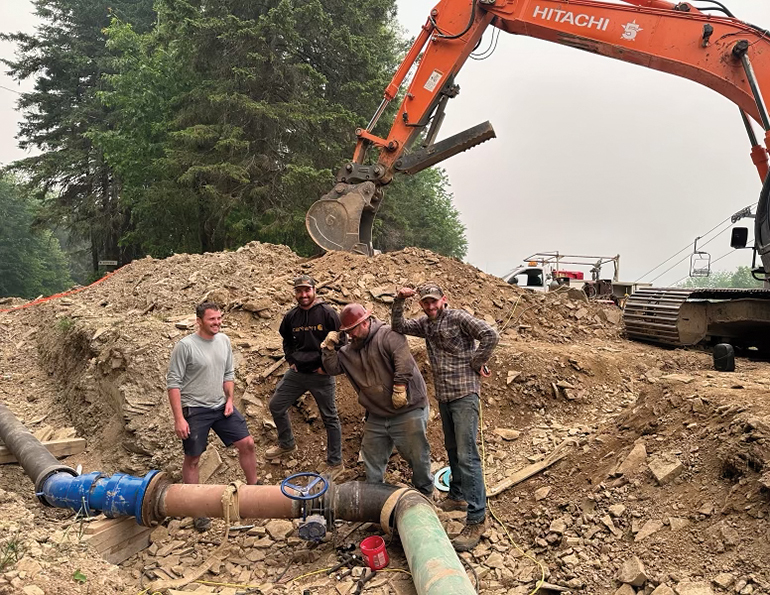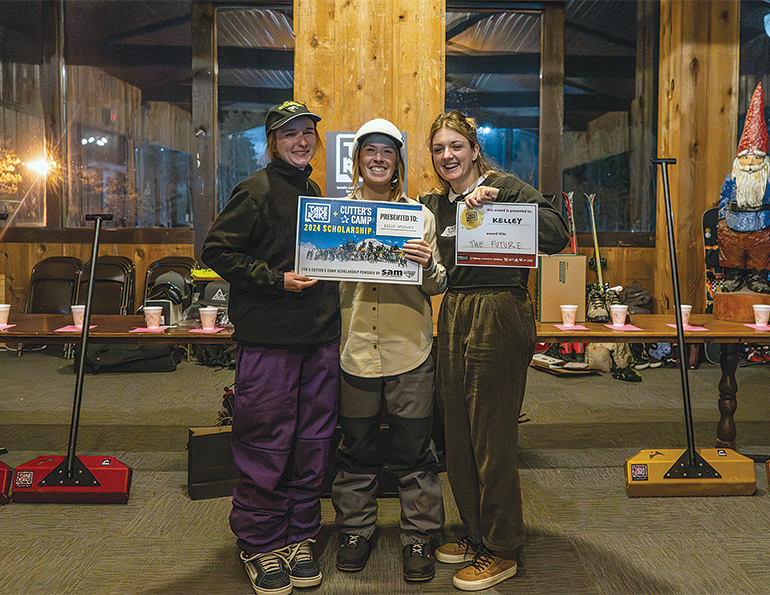A HAPPIER UNION?
By Peter Oliver
In December, the National Labor Relations Board implemented a change in unionization rules, dramatically speeding up the timeline for the formation of a union chapter.
Previously, after a group of employees had informed an employer that at least 30 percent of the group had expressed interest in unionizing, the employer had a window of roughly two months to prepare before the NLRB would call a hearing regarding a unionization vote. That window has now been tightened to 10 days or less.
“This is a significant change in labor law, and it gives unions a huge advantage in trying to unionize employee groups,” says Dave Byrd, director of risk and regulatory affairs for the National Ski Areas Association. “Businesses will be caught off-guard when a union announces there is an employee group that wants to hold a union vote, and instead of two or three months to prepare an educational campaign, businesses are now going to have seven to 10 business days under these new ‘quickie election’ rules.”
For the time being, the rule change has had little effect on the winter resort industry. According to Byrd, only about 15 resorts in the country are currently unionized in any way. The only employee groups affected so far are ski patrollers and lift mechanics, under the aegis of the Communications Workers of America, although there might be some movement astir among instructors.
Further, while resorts owned by larger companies like Alterra and Vail Resorts are the most likely targets of unionization, they are not the only targets—some workers at mid-sized, independently-owned Loveland Basin, Colo., are also unionized. Byrd also notes that there are currently no unions at any resorts east of the Mississippi.
All this suggests that resort operators across the country should be prepared to deal with the increased possibility of unionization. “Businesses need to act well in advance of a possible union vote by analyzing wages and benefits and staying competitive with peers within that particular industry,” says Byrd. In other words, keep abreast of trends in wages and working conditions for various employee groups, such as patrollers or instructors. “Under these quickie election rules, your business will not have time to crunch numbers or draw up strategies,” Byrd adds.
Another step: Resort executives should keep closely attuned to the concerns of their employees. That could mean such simple measures as going out on the mountain and observing what’s happening, or riding the lifts with employees to solicit input. While wages and basic working conditions are the obvious focal points for unionization, even a smaller issue, such as how well uniforms fit, can be a feather that tips the scale.
Byrd says that the NSAA is not anti-union, and concedes that unions can provide employees with an array of benefits and protections. However, a union effectively represents a middle man in the interface between management and resort employees. That could conceivably impact how comfortably management and staff are able to work together and communicate on a personal level.
DIGITAL SAFETY GUIDE AIMS TO EXPAND REACH
By Peter Oliver
Ski California’s Mountain Safety Guide, launched in 2017, has gone digital, and it’s gaining a wider audience. That’s because the digital version is easily distributed by member areas, and because other states are beginning to use elements of the guide.
According to Ski California (SC) president Mike Reitzell, the Pacific Northwest Ski Areas Association and SKI/NY have adopted the guide, with slight revisions, as has the Michigan Snowsports Industries Association.
The digital guide intersperses snippets of written safety guidelines with several videos, the most popular of which, says Reitzell, covers tips for parents on riding chairlifts with kids. While less experienced skiers are the primary target audience, the guide provides advice for skiers of all abilities, including, for example, a section about off-piste avalanche safety.
There were several reasons to go digital, says Reitzell. The main reason: the digital guide provides a broader outreach to resort guests than did print. SC members can distribute the guide via email, online sales, websites, and QR codes, for example. It also allows SC to track who is actually viewing the guide, or at least to get a feel for the volume of viewers.
Another reason was economic. While the digital guide involved a substantial, upfront production expense—$50,000 plus considerable SC personnel hours—the cost of regularly reprinting the hard-copy version would, Reitzell calculates, eventually top that.
In addition, the digital form can be updated “on the fly,” says Reitzell. That means changes, such as recent revisions to the Responsibility Code, can be incorporated quickly and inexpensively, without the hassle and cost of revising and reprinting a hard-copy edition.
The digital guide hasn’t superseded traditional methods of promoting safety at member ski areas (e.g., base-area signs, lift-tower signs). But it has the great advantage, says Reitzell, of allowing resorts “to reach people before they are on the mountain.”
“We’d like to get this as global as possible,” he says. If so, digital safety guides may soon become commonplace at resorts around the country.
“If you have nothing nice to say, say nothing at all.”
—Charles Caleb Cotton (also Thumper, the bunny, from Bambi)First off, let me say I fully appreciate the irony involved with writing a rant piece on those that rant. Regardless, is it not time that those of us in the industry use a little more discretion when it comes to publicly blustering about Ikon and Alterra, Epic and Vail, and the other bigger-than-thou’s that support our industry in ways the average guest is either not close enough to understand or chooses to ignore in favor of juicier soundbites?
I think yes.
I run a resort that stands to benefit, and unquestionably has in the short-term, when the boil of hate-speak about the bigger spots starts to bubble. Which, I suppose, gives me a minute atop the box to express why the grinding needs to stop—or at least peel well back—by those of us inside an industry made unquestionably better by the advancements and improvements brought forward by the arms-race of our senior partners.
Not all of the criticism is wholly unwarranted. The Bigs have broken endemic pricing models, monetized historically sacrosanct corners of their campuses (paying for filtered tap water? Ambitious), in some cases taken a less nimble view on guest service, and, in general, disrupted the status quo. I scratch my head at some of it, as many have. In other areas, though, they’ve nailed it, and many of us, by choice or force, have adopted and adapted some of their policies for our own benefit.
The skiing and riding public have taken to social media to post their thoughts and opinions on the state of the industry, which is their right, if not a particularly good channel for change. We can’t control what our guests say, but it doesn’t help this industry when it appears to our guests that the industry is, if not eating itself, certainly affixing its bib. And all size and stripe of industry folk these days seem to enjoy planting their social media flag firmly on the side of “the industry is forever broken by the Bigs.”
Do we think those of us lucky enough to work in this business will somehow change the arc of recent history with yet another post complaining about paid parking? Or one more groundbreaking here’s-why-window-rates-are-expensive reel? Or another comment bemoaning the absence of soul in an industry built upon it? You know what kills soul quicker than having to reserve a Saturday lift ticket? Closed resorts.
Do any of us on the inside really think growth in faster, more reliable lifts, better snowmaking, longer seasons and, shudder, skiers and snowboarders doesn’t have a dotted line of thanks back to the Bigs? Not to mention that the very existence of the Bigs and the policies they employ provides nearly limitless opportunity to do things differently in an effort to appeal to and attract guests eager to sniff out something different. You don’t need to bash other operators to cash in, you just need to give guests something else to smell.
According to our friends at NSAA, we’ve lost roughly 50 resorts in the last 20 years; over that same time span, roughly five new ski areas have opened, and, frankly, I’m too lazy to see if they haven’t already turned into view-heavy senior living facilities. I hope they haven’t. Additionally, and according to Bill Jensen’s (the ski industry’s very own Belichick) 2015 doom-song, more than 30 percent of the North American ski areas—the delicately titled Sunset’ers—will shuffle off at some point in an undetermined future.
If climate change is sneaking up on us at one end of the spectrum and we’re maligning ourselves at the other, where does that leave the guests sitting in the middle? They’ve lost their home area and they’ve been told not to visit anywhere else because the chili is sixteen bucks a bowl and the HR department is off site. Cue the fiddlers; something’s burning.
We would all do better if we exercised an internal measure twice/cut once philosophy before dropping another post showing someone else’s busy satellite lots and Christmas-Saturday-at-9-a.m. lift corrals or caterwauling about the strategy of expensive window rates (We get it. Everyone gets it.). Instead, spend your time creating alternative options for the guest, introducing more transparency into your operating plan, and being the best, most thoughtful employer you can be. You can do that without adding more noise to the signal. Because if you feel the need to socially bash one of the Goliaths in order to make a case for your David, in the end, there’s ample evidence that we all may end up with a rock in the eye.
—Steve Wright, President and General Manager, Jay Peak, Vt.
SUPPLIER NEWS
FLAIK, a management solution for ski schools, has become a certified B Corporation. “Bagging B Corp status? It’s like nailing the perfect line down a Colorado couloir,” said CEO Steve Kenny. “We’re not just spinning yarns, we’re making epic moves in the heart of the Rockies, mates!”
Industry veteran Jeff Boliba launched a new consulting agency, THE SNOWBALL EFFECT GROUP. The group will focus on facilitating partnerships, coaching and training staff, connecting brands with athletes and ambassadors, and sustainability consulting. Boliba is joined by Rich Morin, who will serve as sustainability lead, and business expert Mike Williams.
LEITNER-POMA OF AMERICA hired Neva Modric as its sustainability coordinator and Deb Hoefer as a software specialist.
Bill Smaine joined LUMIPLAN as director of sales. Smaine has more than 30 years of sales and marketing experience at various companies including Sierra-at-Tahoe, Heavenly, and Homewood, Calif., and Outside TV.

PEOPLE
In the East, Michael Hammes was named general manager of Massanutten, Va. … Donald (DJ) Koch was promoted to GM of Hidden Valley Ski Resort, Pa. ... Jack Frost Big Boulder, Pa., appointed Tony Santora as general manager.
Gunstock Mountain, N.H., GM Tom Day will retire at the end of the season. … King Pine, N.H., marketing director Thomas Prindle was promoted to director of hospitality marketing for Highway West Vacations, which operates King Pine, and Chris McNevich was hired as marketing coordinator for King Pine/Purity Spring. … Deirdre Morris retired after 36 years at Killington, Vt.
In the Midwest, Wild Mountain, Minn., promoted Nathan Hakseth to general manager. … Boyne Mountain, Mich., mountain ops jack-of-all-trades Vic Hart has retired after 40 years at the resort.
In Utah, Snowbird hired Lauren Stephenson as product marketing specialist. … Nick Dana was appointed director of mountain operations for Park City Resort. … Nick Como joined Sundance Mountain as VP of marketing.
Alterra Mountain Company named Brian VandenBroek as vice president of corporate development integrations.
PSIA-AASI appointed Katherine Fuller as its new marketing and communications director. … Lesford Duncan is the new executive director of the Outdoor Foundation.

AWARDS
The snowmaking team from Greek Peak, N.Y., won the 2024 HKD-sponsored “I AM a Snowmaker” competition. Nearly 12,000 votes were cast in a 12-day voting period at the end of January. HKD will host the winning team at its Canadian headquarters in Quebec City, Quebec, for two days of education and entertainment.
 Greek Peak, N.Y., snowmakers hard at work.
Greek Peak, N.Y., snowmakers hard at work.
Joseph-Armand Bombardier, inventor of the first mass-produced snow machine, the Ski-Doo snowmobile, was inducted posthumously into the National Inventors Hall of Fame.
Veteran snowmaker Jeremy Tedeschi of Mount Snow, Vt., won the SMI Snow Makers 2023-24 photo contest. Tedeschi’s photo of an SMI fan gun operating below fireworks in the sky garnered more than 1,500 likes on Facebook.
Kelly Mooney, snowcat operator at Liberty Mountain, Pa., was awarded the title “The Future” at terrain park building event Take the Rake. For the commitment to professional development and passion for park building she demonstrated, Mooney received a full scholarship to Cutter’s Camp 2024.
 Kelly Mooney (left) at Take the Rake.
Kelly Mooney (left) at Take the Rake.







